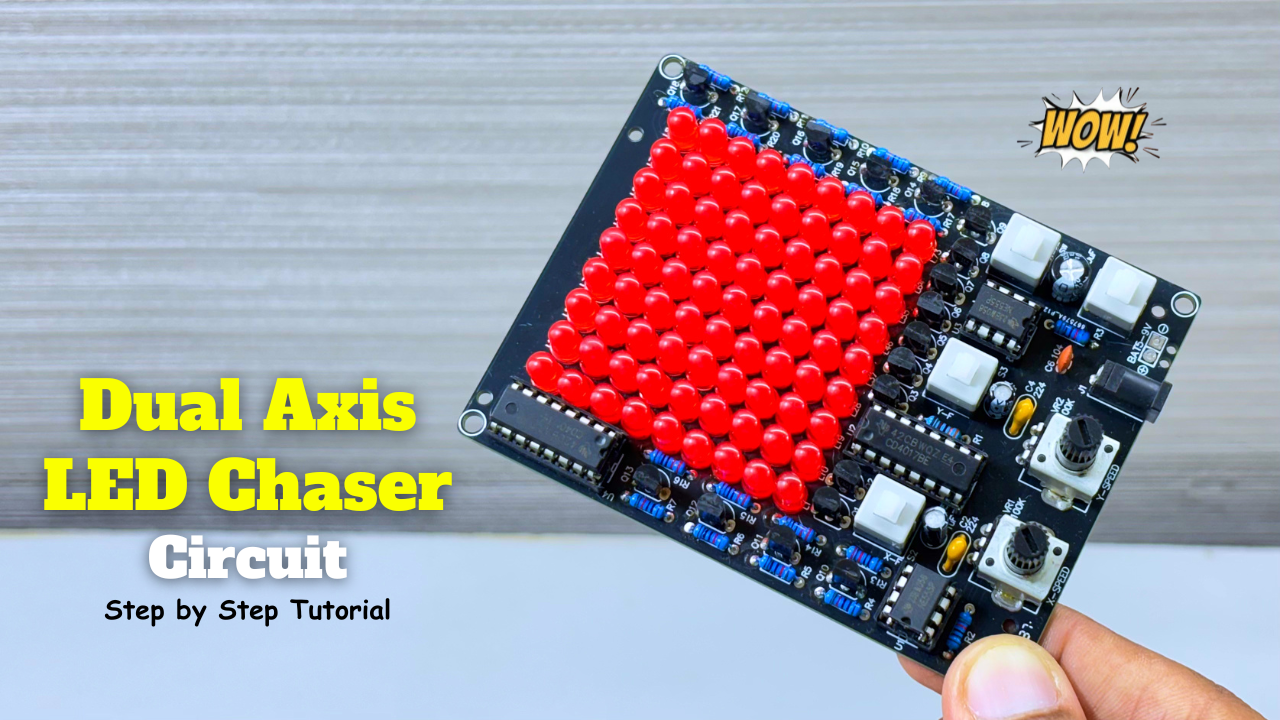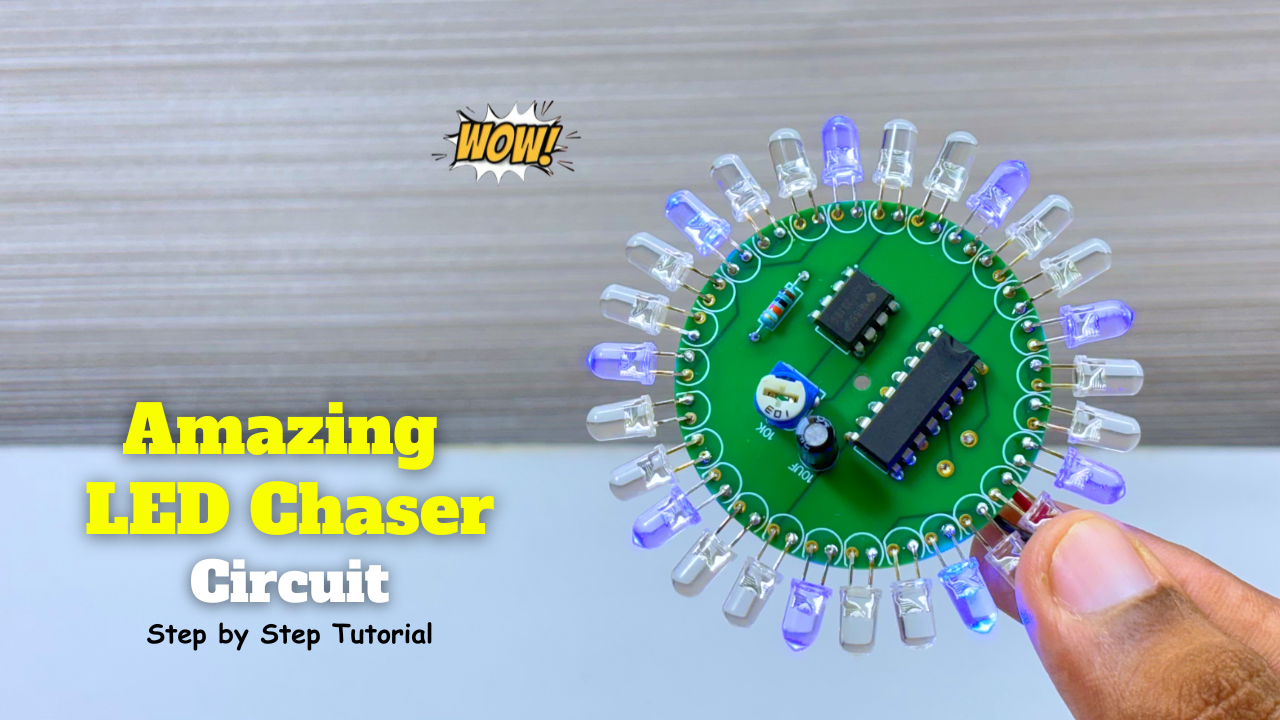LED chasers are a fun and creative way to display a sequence of lights. In this blog post, we’ll show you how to build an LED chaser using a 555 timer and CD4017 decade counter.
Building an LED chaser with a 555 timer and CD4017 is a fun and educational project. It demonstrates the principles of digital electronics and sequential logic. With this circuit, you can create a mesmerizing display of lights that will impress your friends and family.
Components Required:
- 555 Timer IC
- CD4017 IC
- 10k Ohm Resistor
- 10uf Capacitor
- 10k Ohm Potentiometer
- Led – 27 Pcs
- 9-12v power supply
Circuit Diagram:
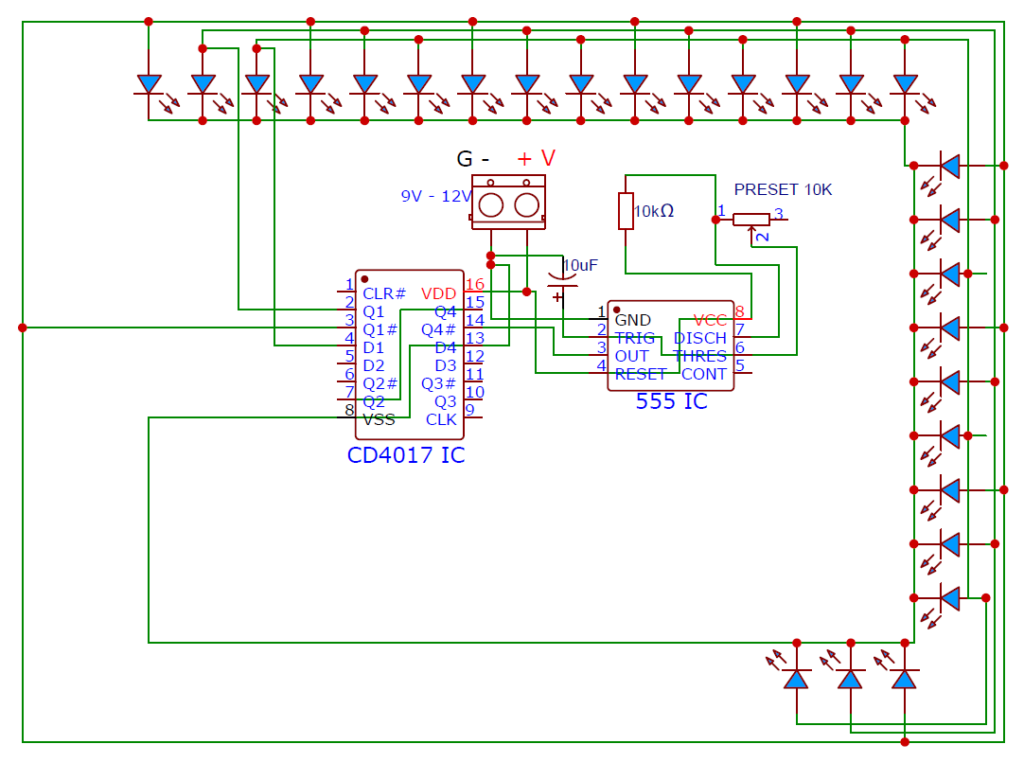
Gerber File:
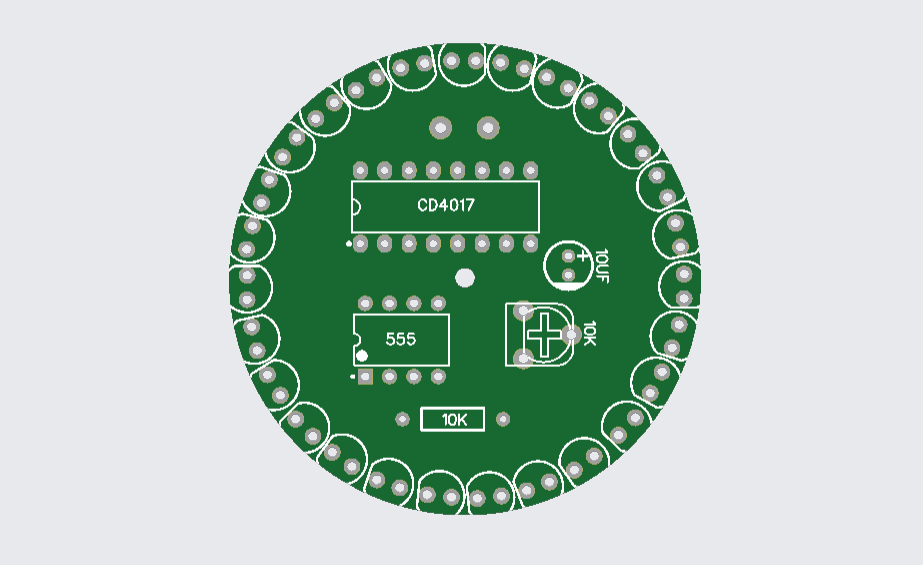
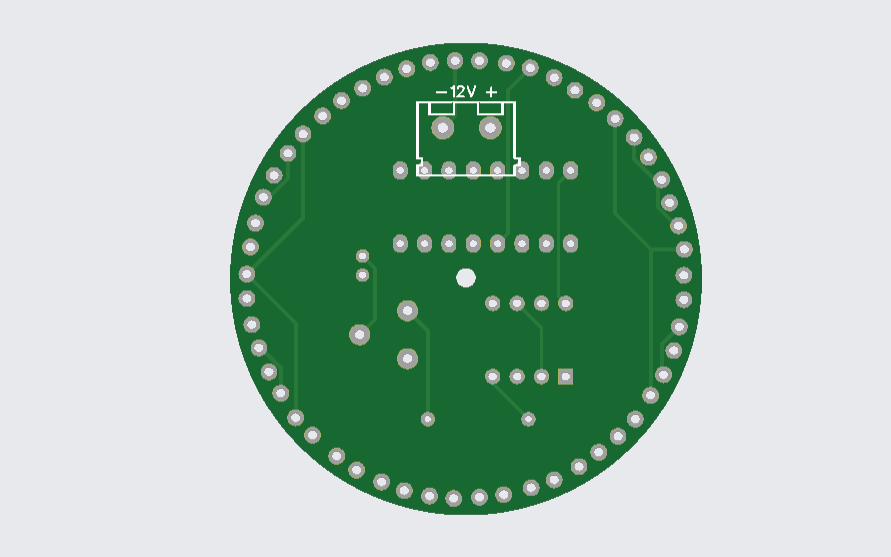
Special Thanks to Our Sponser – JLCPCB:
No project is complete without the right tool and materials. That’s why our sponser JLCPCB stepped into provide essential material for the project. JLCPCB is a leading provider of high quality printed circuit board and PCB assembling services.
Simply head over to JLCPCB, Upload your gerber file, select specification and just place your order.
48-Hour Turnaround for 6 Layer PCBs!

$0 for 2u” ENIG. Free Via-in-Pad. High Precision. Sign Up to Get $80 New User Coupons.

How To Order PCB
555 Timer IC
The 555 timer IC is a legendary integrated circuit that has been a cornerstone of electronics projects for decades. Introduced in 1972 by Signetics, this versatile chip has become a staple in the world of electronics, renowned for its simplicity, reliability, and flexibility. The 555 timer IC is a monolithic timing circuit that can be used in a wide range of applications, including oscillators, timers, pulse generators, and alarm circuits. It consists of two main components: a voltage-controlled oscillator (VCO) and a flip-flop. The VCO generates a square wave output, while the flip-flop acts as a Schmitt trigger, providing hysteresis and ensuring clean switching.
Pinout and Configuration
The 555 timer IC has eight pins, each with a specific function:
- Pin 1: Ground
- Pin 2: Trigger input
- Pin 3: Output
- Pin 4: Reset input
- Pin 5: Control voltage input
- Pin 6: Threshold input
- Pin 7: Discharge pin
- Pin 8: Supply voltage (Vcc)
The 555 can be configured in various modes, including:
- Monostable (one-shot) mode
- Astable (free-running) mode
- Bistable (Schmitt trigger) mode
Applications and Projects
The 555 timer IC has been used in countless projects, including:
- Timer circuits (e.g., egg timers, alarm systems)
- Oscillators (e.g., audio signals, LED flashers)
- Pulse generators (e.g., infrared transmitters, ultrasonic cleaners)
- Alarm circuits (e.g., motion detectors, smoke detectors)
- LED flashers and blinkers
- Audio circuits (e.g., tone generators, sound effects)
CD4017 IC
CD4017 IC: A Decade Counter for Your Electronics Projects
The CD4017 IC is a decade counter chip that has been widely used in electronic projects for decades. It’s a versatile and reliable component that can be used in a variety of applications, from simple counters to complex digital displays.
It is a decade counter chip that counts from 0 to 9. It has 10 output pins, each representing a digit from 0 to 9. The chip also has a carry pin that can be used to connect multiple CD4017 chips together to create a larger counter.
Pinout and Configuration
The CD4017 IC has 16 pins, including:
- 10 output pins (Q0-Q9)
- 1 carry pin (CARRY)
- 1 reset pin (RESET)
- 1 clock pin (CLOCK)
- 1 input pin (INPUT)
- 2 power pins (VCC and GND)
How it Works
The CD4017 IC works by incrementing the count each time a clock pulse is applied to the clock pin. The count can be reset to 0 by applying a reset pulse to the reset pin. The carry pin can be used to connect multiple CD4017 chips together to create a larger counter.
Applications and Projects
The CD4017 IC has been used in a wide range of applications, including:
- Digital clocks
- Counters
- Display drivers
- Sequencers
- Traffic lights
- Scoreboards
More Projects
-
Dual Axis LED Chaser Circuit
Components Required: Special Thanks to Our Sponser – JLCPCB: No project is complete without the right tool and materials. That’s why our sponser JLCPCB stepped into provide essential material for …
-
Amazing LED Chaser Circuit – Beautiful Decoration Idea
LED chasers are a fun and creative way to display a sequence of lights. In this blog post, we’ll show you how to build an LED chaser using a 555 …
-
Building a 12v 30Ah Li-ion Battery Pack with Daly BMS
If you’re interested in DIY battery projects, this guide shows how I built a 4S10P (14.8V nominal) battery pack using 40 pcs of 18650 Li-ion cells and a Daly BMS. …

